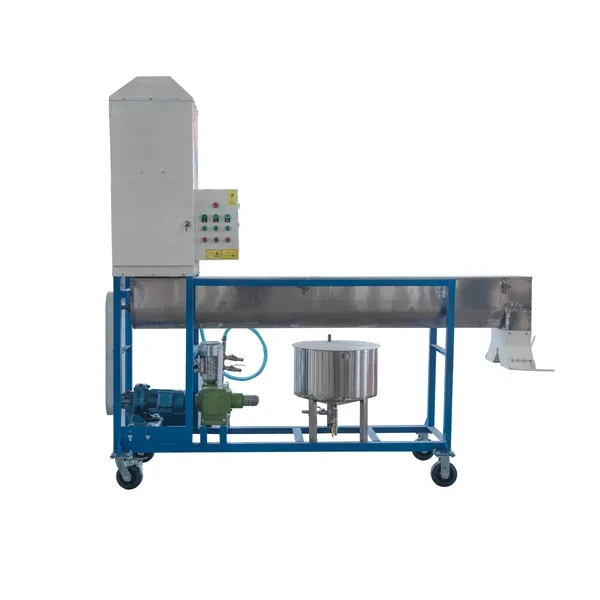Una máquina de recubrimiento de semillas se utiliza principalmente para aplicar capas protectoras, nutrientes y agentes de tratamiento a las semillas para mejorar su rendimiento y aumentar las posibilidades de germinación y crecimiento exitosos. Al recubrir uniformemente las semillas con materiales como pesticidas, fungicidas, fertilizantes o estimulantes del crecimiento, la máquina ayuda a protegerlas de enfermedades, plagas y factores ambientales estresantes como la sequía o las malas condiciones del suelo. Esta capa protectora también mejora el manejo de las semillas y la eficiencia de la siembra al reducir el polvo y la aglomeración, lo que resulta en una siembra más uniforme. Además, las semillas recubiertas suelen presentar una germinación más rápida y vigorosa gracias a los nutrientes y promotores de crecimiento añadidos, lo que en última instancia contribuye a un mayor rendimiento de los cultivos. Las máquinas de recubrimiento de semillas permiten un control preciso de la cantidad y la composición del recubrimiento aplicado, garantizando que las semillas reciban un tratamiento óptimo sin desperdicio. Esta precisión reduce el impacto ambiental de los productos químicos al minimizar el uso excesivo. La máquina se utiliza ampliamente en agricultura, horticultura y silvicultura, beneficiando por igual a agricultores, productores de semillas e investigadores. En general, el uso de una máquina de recubrimiento de semillas mejora la calidad de las semillas, aumenta la productividad de los cultivos y respalda las prácticas agrícolas sustentables al proteger las semillas y promover un desarrollo más saludable de las plantas.
Maquinaria Beibu








